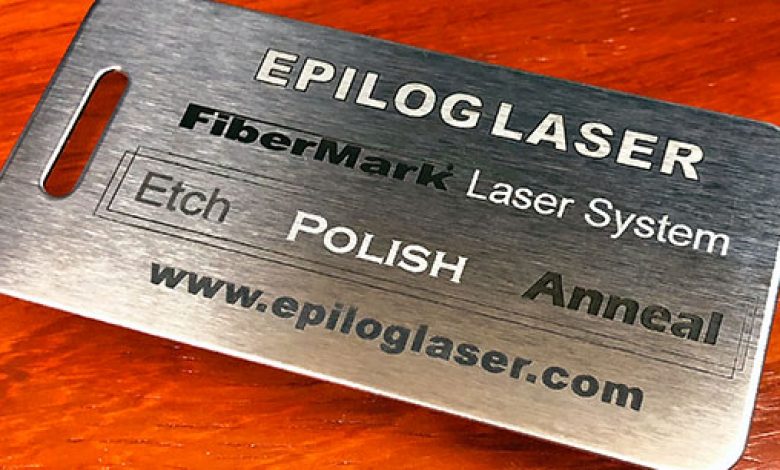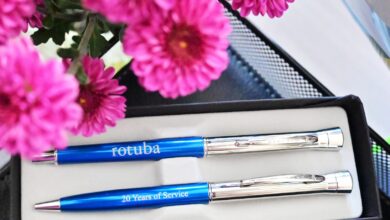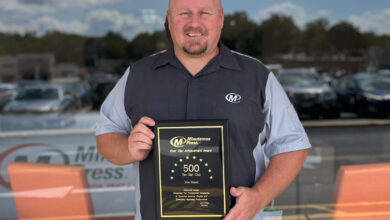
Engraving and marking are very similar and can be used interchangeably. However, the term “laser marking” is more often associated with metals and engineered plastics, while “laser engraving” usually refers to other substrates like wood, acrylic, and plastic.
Fiber or galvanometer (galvo) laser systems are typically used for laser marking bare metals and engineered plastics. These types of lasers have different wavelengths than CO2 lasers, which allow them to mark bare metals without the use of metal marking agents, like CerMark or Enduramark.
When marking bare metal with a fiber or galvo laser system, the final marks typically fall under the following categories:
Etched
 Etching is often used for industrial purposes, like marking tools or parts with serial numbers, logos, and bar codes. The etching process removes material from the metal. Material is removed to create whatever mark the user desires (barcode, data matrix code, etc.) Essentially, it is a shallow engraving that produces a high contrast mark in the metal.
Etching is often used for industrial purposes, like marking tools or parts with serial numbers, logos, and bar codes. The etching process removes material from the metal. Material is removed to create whatever mark the user desires (barcode, data matrix code, etc.) Essentially, it is a shallow engraving that produces a high contrast mark in the metal.
Polished

Polished metal, or “mirrored” as it sometimes called, is a laser effect where the laser beam heats the surface of a material, and as it cools, the material takes on a different finish. Most common on matte-finish metal, this technique creates marks that can look almost holographic.
Unlike etching, no material is removed from the metal being marked. It is the heat that alters the finish of the metal. Since the polished look emits a sense of sophistication and distinction, it is often used in architectural signage and labeling high-end products where a unique or aesthetically-pleasing mark is necessary. The mirrored finish produces a tone-on-tone look where the metal has been marked.
Annealed

An annealed mark is like the polishing process. The laser is used to heat the metal to near melting points, which induces a color change to the top layer of material. Depending on the metal type, annealing often gives a dark, almost iridescent look. Similarly, fiber laser parameter settings can be used to produce distinct colors on certain materials intentionally.
Since no material is removed from the metal, this technique is often used for medical devices used within the human body. Annealing leaves no cuts or shallow engravings like those found in marking and etching and typically produces the darkest mark of these three methods.



